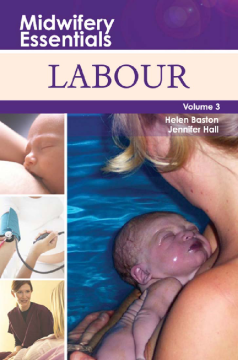
Additional Information
Book Details
Abstract
Labour is the third title in the Midwifery Essentials series and is about the provision of safe and effective care during labour and birth. This book prepares the reader to provide safe, evidence-based, woman-centred intrapartum care.
- Assessment and the role of the midwife in early labour
- The first stage of labour, monitoring maternal and fetal wellbeing
- Coping with contractions, without pharmacological pain relief
- Advantages and disadvantages of pharmacological analgesia
- Indications for induction or augmentation of labour
- The second stage of labour and the procedure for episiotomy
- The third stage of labour and the impact of different approaches
- Different methods of anaesthesia and preparation for caesarean birth
- The procedure for evidence-based perineal suturing.
- Assessment and the role of the midwife in early labour
- The first stage of labour, monitoring maternal and fetal wellbeing
- Coping with contractions, without pharmacological pain relief
- Advantages and disadvantages of pharmacological analgesia
- Indications for induction or augmentation of labour
- The second stage of labour and the procedure for episiotomy
- The third stage of labour and the impact of different approaches
- Different methods of anaesthesia and preparation for caesarean birth
- The procedure for evidence-based perineal suturing.
Midwifery Essentials consists of a series of four pocketbooks, based on the popular and successful ‘Midwifery Basics’ articles published in ‘The Practising Midwife’ journal. They have been written in response to many requests from students, midwives and supervisors to combine these articles into a handy text.
The books remain true to the style of the articles and have been updated and expanded to create a user-friendly source of information on different aspects of midwifery care. They will stimulate debate and require the reader both to reflect on their current practice, local policies and procedures and to challenge care that is not woman centred.
There are many dimensions to the provision of woman-centred care that practitioners need to consider and understand so the series is based on the principles of holistic care, using a ‘jigsaw’ model as a framework. Each aspect of the jigsaw should be considered during the assessment, planning, implementation and evaluation of woman-centred maternity care, for example:
- how does a midwife obtain consent from a woman for a procedure, maintain a safe environment during the delivery of care and make the most of the opportunity to promote health?
- what are the professional and legal issues in relation to the procedure and is this practice based on the best available evidence?
- which members of the multi-professional team contribute to this aspect of care and how is it influenced by the way in which care is organised?
- Provides information essential for best practice at all stages of pregnancy and birth
- ‘Jigsaw’ model promotes holistic care
- Scenarios help readers understand the context of maternity care
- Activities encourage further exploration and debate.
Series features:
